
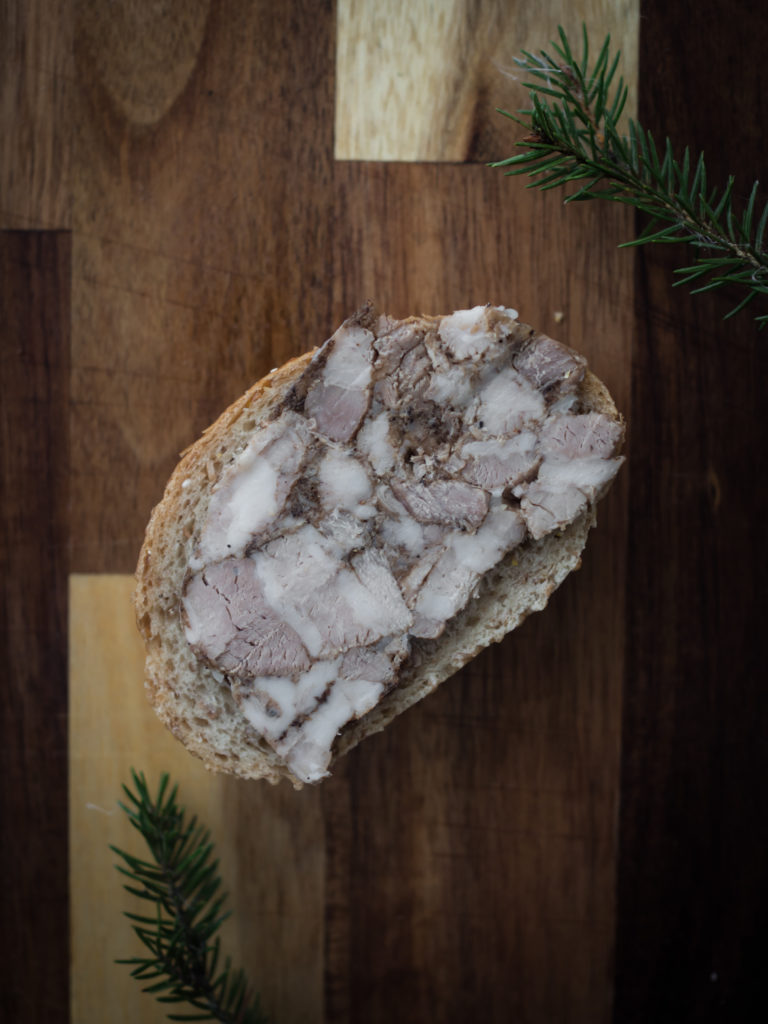

Julesylte is a type of pressed cooked meat, or cold cut, that is served during Christmas and usually consists of pork. The meat is cooked and flavored with warm spices reminiscent of the season. While there are different variations across Scandinavia, cold cuts are a common pålegg, or topping for your bread.
Traditionally, the pork head was used and referred to as hodesylte or “headcheese” in English. This meant none of the animal would go to waste, with the skin providing the right amount of gelatin for everything to come together.

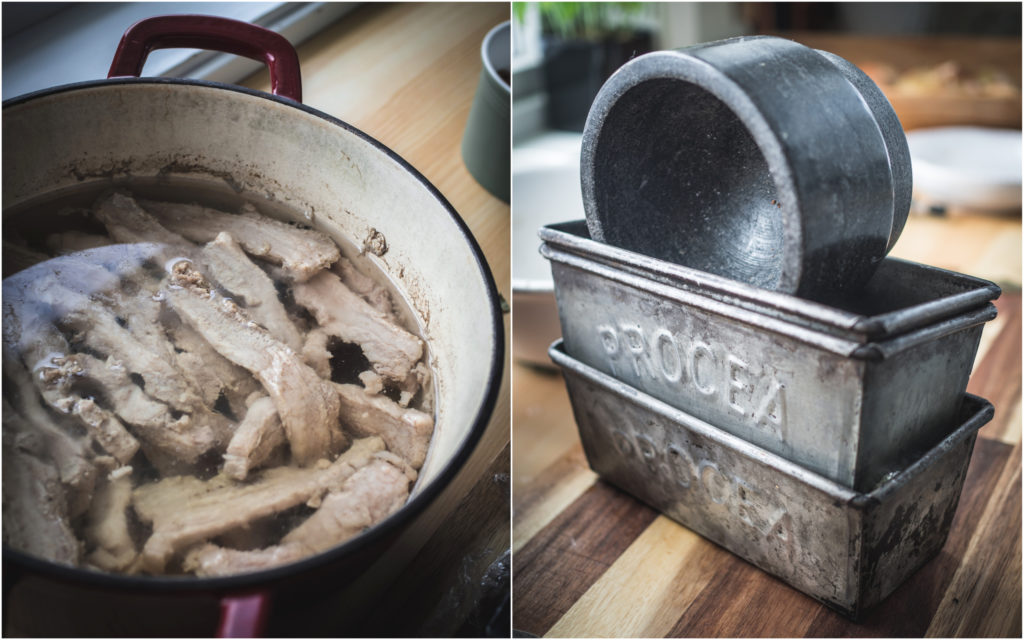
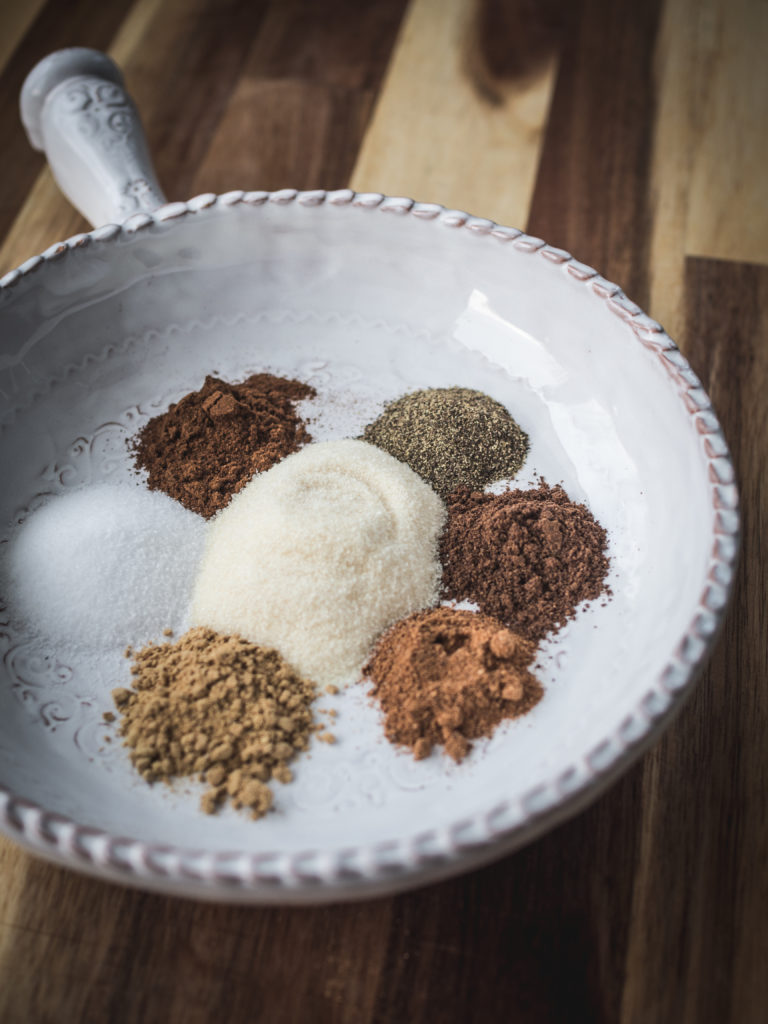
In this recipe, I use pork belly without the loin (tynnribbe) and remove the ribs and skin. You can do this yourself or ask your butcher to do it for you. I saved the ribs to barbecue and made Christmas cracklings out of the skin. The stock can also be used later on, making this a recipe that serves multiple purposes.
It’s simple enough to make julesylte at home and if you prefer to not use pork, you can use other types of meat like lamb or turkey.
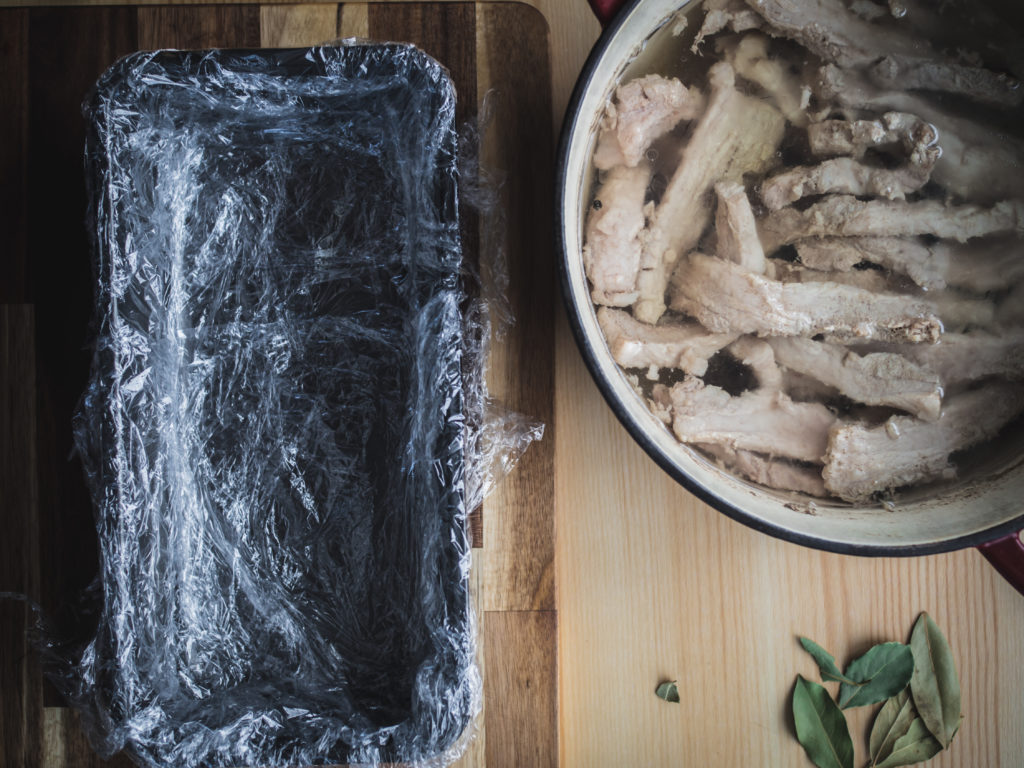
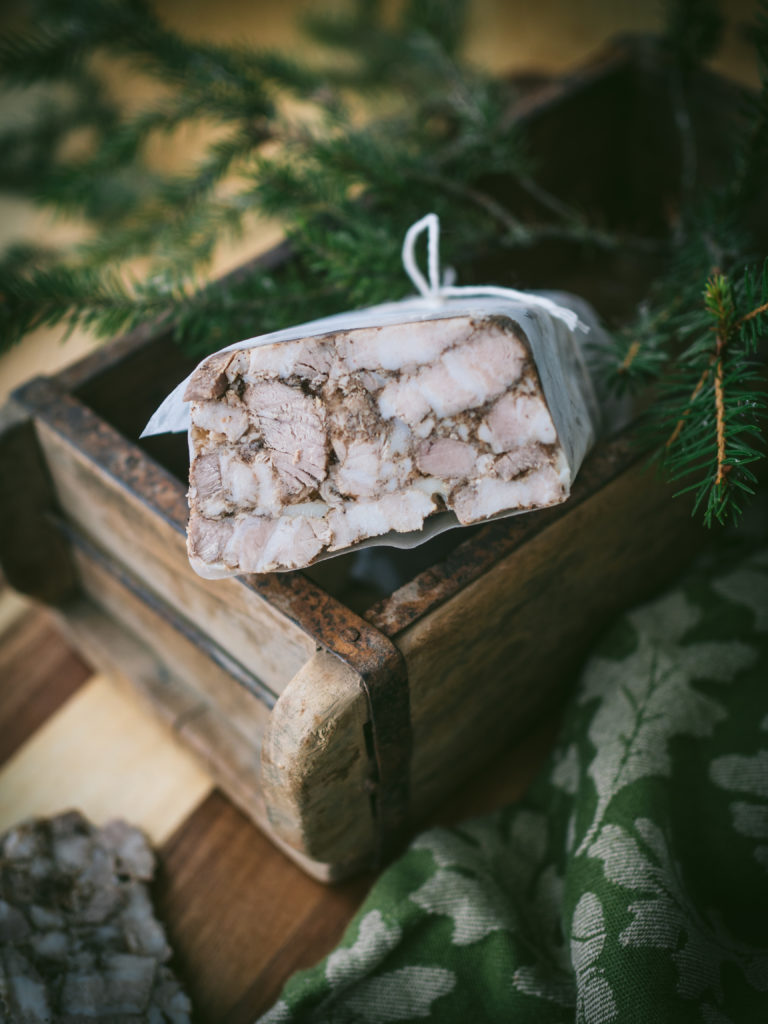
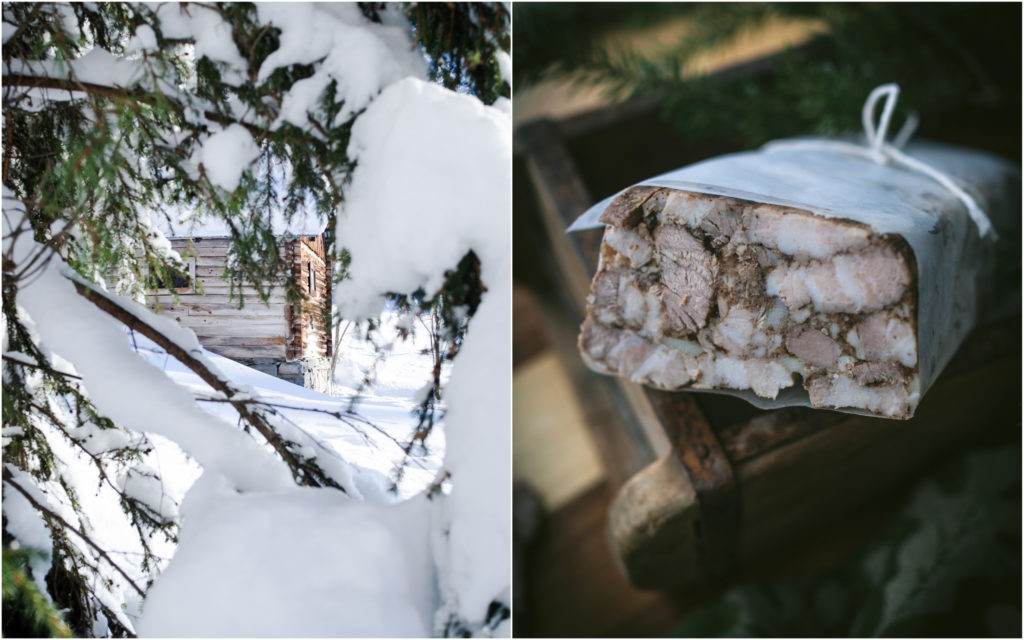
Julesylte (Christmas Pressed Pork)
Makes 1 tin
- 5 ½ pounds (2 ½ kg) pork belly “tynnribbe” without loin (about 2.9 pounds or 1.3 kg after bones and skin are removed)
- 2 ½ quarts (2 ½ liters) cold water
- 2 bay leaves
- 1 teaspoon whole black peppercorns
For the spice mixture:
- 1 teaspoon ground allspice
- 1 teaspoon ground cloves
- 1 teaspoon ground nutmeg
- 2 teaspoons salt
- 1 teaspoon black pepper
- 1 teaspoon ground ginger
- 5 teaspoons gelatin powder
You can watch the video tutorial here.
Remove the bones and the top layer of skin and fat from the pork belly. Save the ribs for another dish and use the intact layer of skin and fat to make cracklings, if desired. Slice the pork belly into thin strips, about 1/5 inch (½ cm) thick.
Fill a large pot with the cold water, bay leaves and whole black peppercorns and heat over medium-high heat. When the water is close to simmering, add in the slices of pork belly. Cover with a lid and lower the heat. Cook on a gentle simmer for 1 ½ to 2 hours, until soft.
While the pork belly is cooking, combine all the spice ingredients together in a small bowl. Line a small loaf tin (8 x 4 x 3 inches / 21 x 10 x 8 cm) with plastic wrap that’s been doubled, ensuring it hangs over the sides of the tin.
When the pork belly is finished cooking, remove from the heat. With a pair of tongs, remove the meat into a large bowl (don’t worry about some of the stock getting into the bowl). Discard the bay leaves and peppercorns. Sprinkle the spice mixture over the meat and gently mix everything together with your hands, until well combined. Take the meat and start layering each strip into the prepared tin loaf. When finished, take a very small ladle of stock (about ¼ cup or 60 ml) into the bowl and gather up any leftover spices and pour this over the meat. Fold over the plastic and cover the meat completely.
The next step is to add pressure to the meat. You can use a press or a similar loaf tin and fill it with weight, equaling about 4 ½ – 6 ½ pounds (2 to 3 kg). The important thing is to ensure that there is enough weight and equal pressure among the tin. Set it in the refrigerator for 24 hours before serving.
To serve, cut it in thin slices and serve with bread, mustard and red beets, if desired.
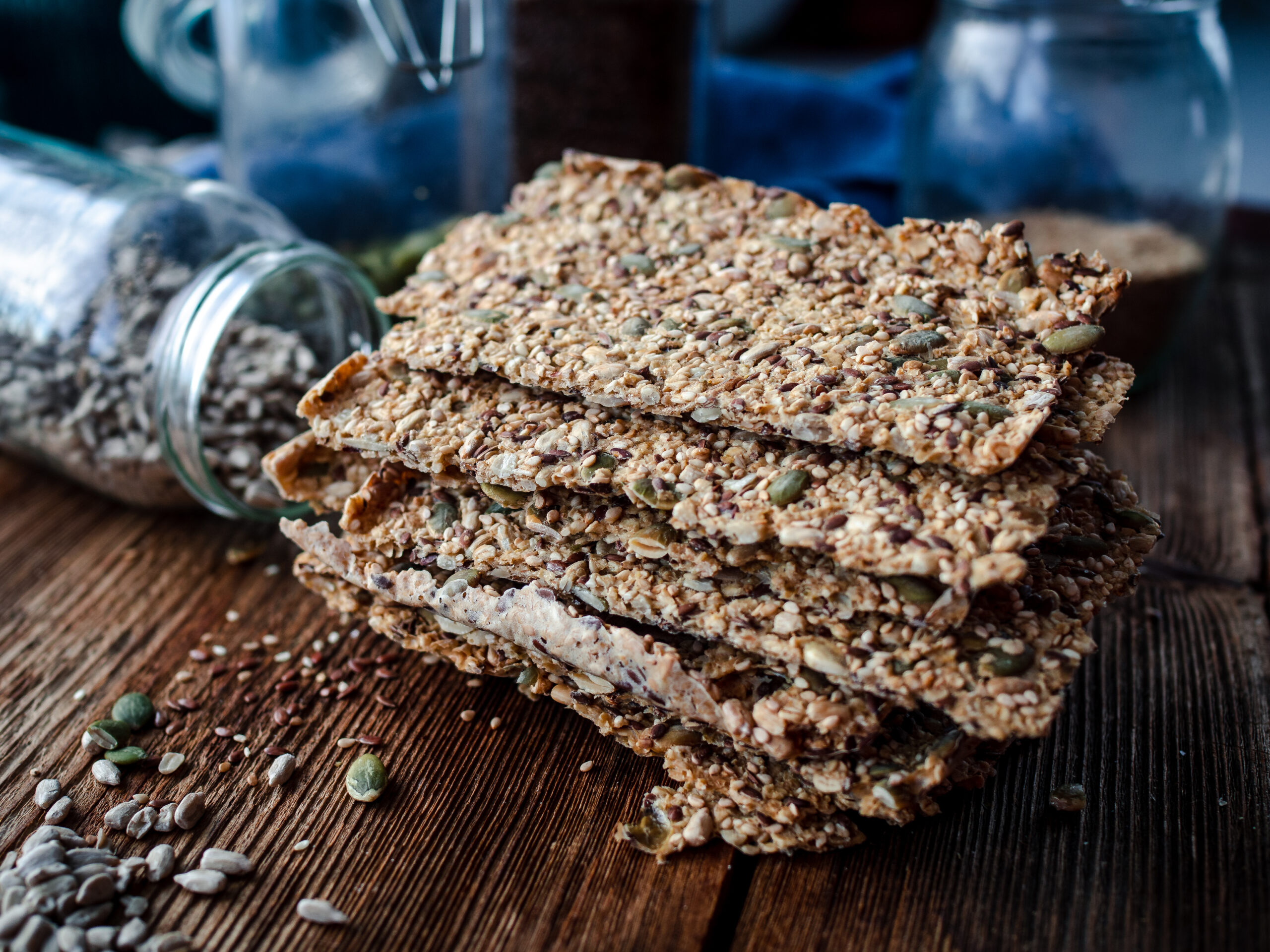


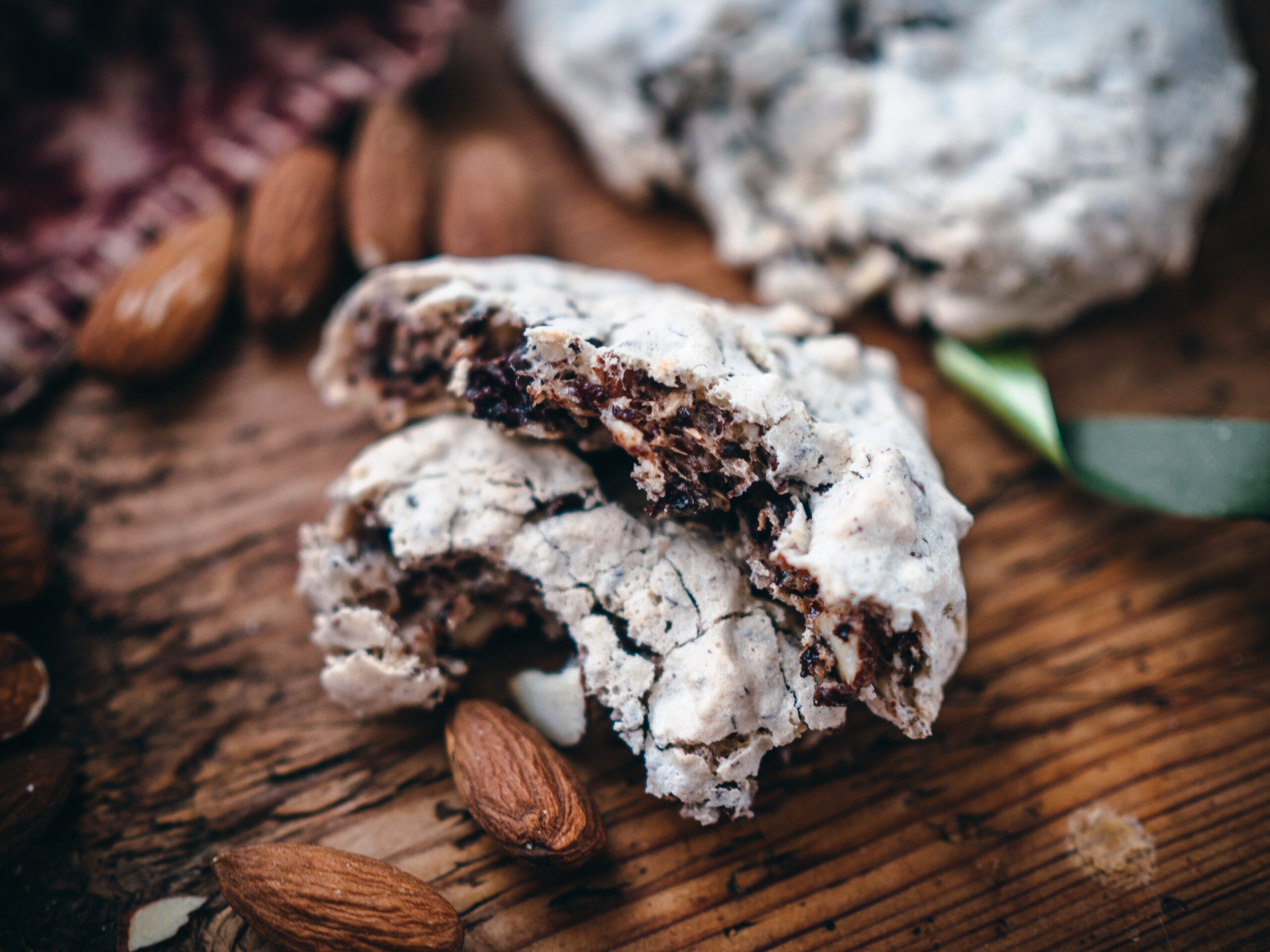

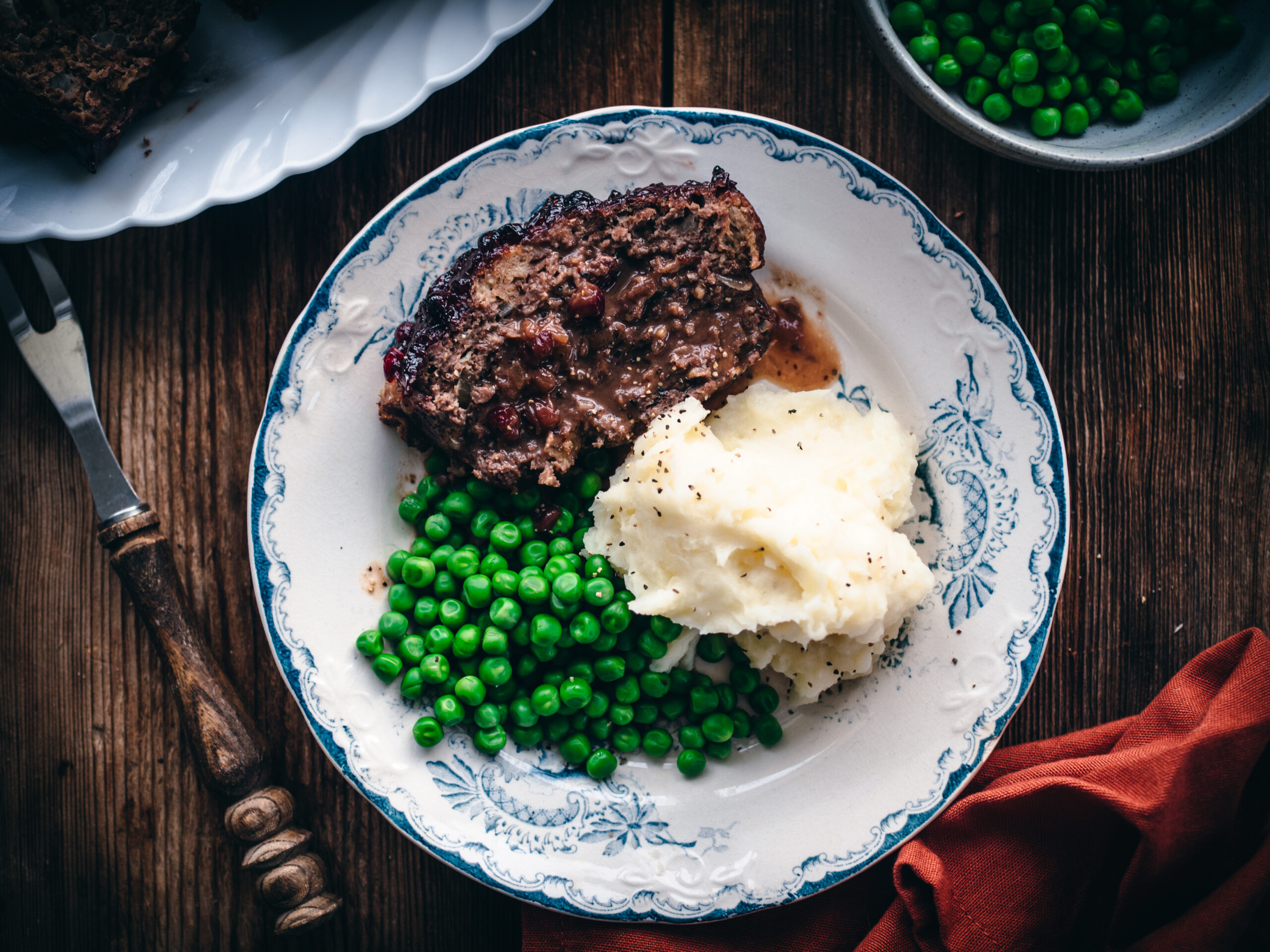
Add a comment